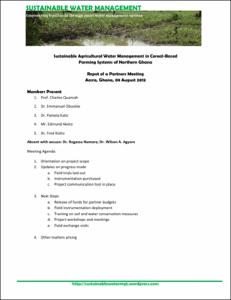Smallholder Agricultural Carbon Projects in Eastern Africa
This manual has been developed to help build the capacities of farmers, farmers groups, extension staff and project managers who are implementing agricultural carbon projects in Eastern Africa. The manual describes the steps for implementing an afforestation/reforestation voluntary carbon project based on the Plan Vivo Standard.










